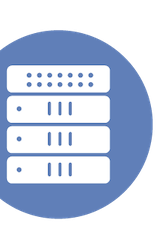|
|
 Cato Grace and Juden Supapo presented for HPE OpsRamp at Cloud Field Day 23 |
Observe – Analyze – Act. An introduction to HPE OpsRamp
Watch on YouTube
Watch on Vimeo
HPE’s presentation at Cloud Field Day 23 introduced OpsRamp, a SaaS platform designed to address the challenges of modern IT environments. OpsRamp provides a unified approach to managing diverse infrastructure by focusing on observing, analyzing, and acting on collected data. This involves ingesting data from various sources, such as applications, servers, and cloud environments, into a central tool, enabling users to access all their data in one place.
The platform’s key features include robust analytics and automation capabilities. OpsRamp utilizes machine learning to assist users in analyzing data, identifying issues, and automating corrective actions. This automation streamlines issue resolution, potentially reducing resolution times significantly through integrations with over 3,000 systems. Furthermore, OpsRamp offers both agent-based and agentless monitoring options, providing flexibility depending on the type of resources being monitored.
OpsRamp differentiates itself by offering full-stack monitoring and an AI-powered analytics engine that can integrate with existing monitoring tools to correlate alerts across disparate tools. It provides both broad monitoring capabilities and integration of existing tools. The platform’s licensing model is subscription-based, determined by the number of monitored resources and the volume of metrics collected, with data retention policies tailored to different data types.
Personnel: Cato Grace
Minimizing Application Downtime with HPE OpsRamp
Watch on YouTube
Watch on Vimeo
HPE’s presentation at Cloud Field Day 23, delivered by Juden Supapo, focused on minimizing application downtime using HPE OpsRamp. The demonstration began by displaying a dashboard that monitored a mission-critical ERP application. The speaker highlighted key performance indicators and the overall health of the application. He then presented a service map, a visual representation of the infrastructure supporting the application, including database nodes, servers, and network devices. The service map enables administrators to quickly identify issues by visualizing the relationships between various infrastructure components.
The presentation then illustrated how OpsRamp handles infrastructure issues. By simulating a database outage, the speaker demonstrated how the dashboard and service map responded in real-time. Alerts were triggered, and the service map indicated the location of the problem. He emphasized the alert correlation feature, which uses machine learning to group related alerts, identify probable root causes, and streamline troubleshooting. This grouping allows administrators to address the primary issue instead of dealing with numerous cascading alerts, thus saving time and improving operational efficiency.
Finally, the presentation concluded by showcasing automation and governance within OpsRamp. When the simulated outage occurred, the system automatically generated a task, including an email notification. Through a low-code, no-code process automation workflow, the speaker demonstrated how the system could trigger a script to attempt to restart the affected service. This showcased the platform’s capability to combine automated remediation with governance through approval processes. This combination of features minimizes downtime.
Personnel: Juden Supapo
Optimizing Networking Performance with HPE OpsRamp
Watch on YouTube
Watch on Vimeo
HPE’s presentation at Cloud Field Day 23, led by Juden Supapo, focused on optimizing networking performance using the HPE OpsRamp software. The presentation centered around demonstrating the platform’s ability to identify and automatically resolve network issues, specifically excessive traffic flooding.
The demonstration showed how OpsRamp’s dashboard provides network observability, allowing users to monitor the health of critical applications and network devices. By simulating a network issue with a script that generated excessive traffic, the presenter demonstrated how OpsRamp identified the problem through its monitoring of switch interfaces and virtual machine (VM) utilization. The system then generated alerts, which, in this case, escalated to show a task that, upon approval, triggered an automation script to block the offending IP address and back up the network configuration.
Beyond the demonstration, the presentation also touched on the future roadmap for OpsRamp. The key areas of focus are new device integrations (weekly updates), more sophisticated alert correlation, and AI-driven dashboard creation. The platform utilizes AI to analyze metrics and detect anomalies. HPE is also exploring the addition of features such as the ability to recommend dashboard thresholds based on historical data analysis.
Personnel: Juden Supapo









